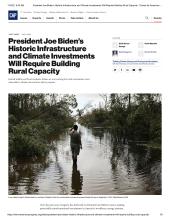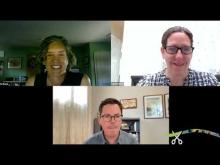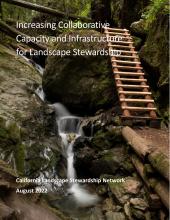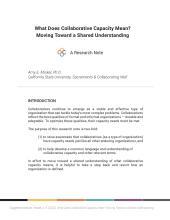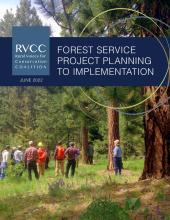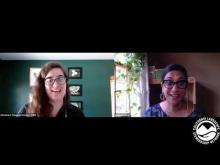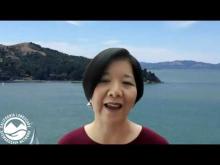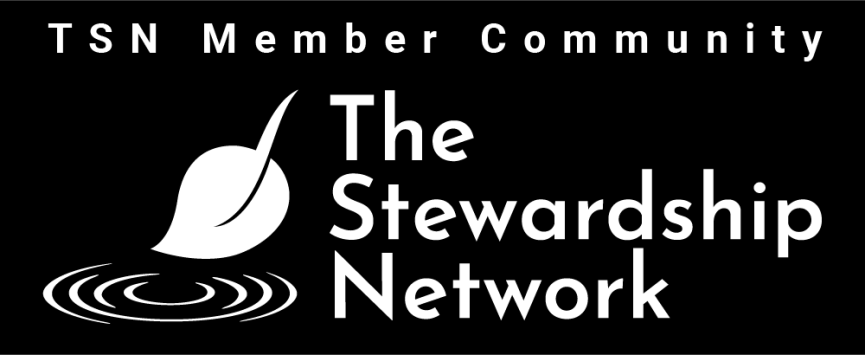- Details
-
This brief article links to two October 2022 reports CAP issued that assess the ways in which missed opportunities in implementing federal resilience programs exemplify the challenges facing rural communities.
- Details
-
On September 7, 2022, the California Landscape Stewardship Network hosted the 5th virtual Cutting Green Tape Exchange. During two hours, we heard insights, updates and more on the Cutting Green Initiative from:
- Welcome from lead facilitator Shawn Johnson (University of Montana)
- Reflections on Cutting Green Tape from Wade Crowfoot (California's Secretary for Natural Resources)
- Presenting the Hidden Hero Awards to Madeline Cavalieri (California Coastal Commission) and Jake Shannon (North Coast Regional Water Board)
- SERP Program highlights and updates from Brad Henderson (California Department of Fish and Wildlife)
- Practitioners' panel on SERP Program project implementation including Kristan Culbert (American Rivers), Kellyx Nelson (California Landscape Stewardship Network), and Jim Robins (San Mateo RCD)
- News Announcement on the Programmatic USFWS Biological Opinion from Katie Haldeman (Sustainable Conservation) and Lee Ann Carranza (US Fish & Wildlife Service)
- Discussing the Cutting Green Tape Case Study with Amy Mickel (California State University at Sacramento) and Sharon Farrell (California Landscape Stewardship Network)
- Closing Reflections from Jennifer Norris (Deputy Secretary for Biodiversity and Habitat) The Exchange was facilitated by Shawn Johnson, CLSN Steering Committee member and Director at the University of Montana's Center for Natural Resources & Environmental Policy.
- Details
-
Most current natural resource plans and policies focus on the need for collaborative management. Indeed, the complexity and intersectionality of today’s biodiversity, environmental justice, and climate change challenges require collaboration with diverse governmental and non-governmental partners at many scales. However, multi-benefit, cross-sector, and cross-boundary collaboration is an emerging field, one in which practices continue to evolve. While California’s leaders have expressed strong support for collaboration, agencies and legislators are seeking to identify specific roles that the state and federal government can play to activate and sustain this work at a regional scale.This paper provides an overall approach as well as specific recommendations for how state and federal agencies can support the building and sustaining of local and regional collaboration necessary to advance landscape-scale stewardship.
- Details
-
Collaboratives continue to emerge as a viable and effective type of organization that can tackle today’s most complex problems. Collaboratives reflect the best qualities of formal and informal organizations — durable and adaptable. To optimize these qualities, their capacity needs must be met.
The purpose of this research note is two-fold:(1) to raise awareness that collaboratives (as a type of organization) have capacity needs just like all other enduring organizations, and
(2) to help develop a common language and understanding of collaborative capacity and other relevant terms.
- Details
-
Rural Voices for Conservation Coalition (RVCC) developed the following guidebook that charts the course of a Forest Service project, from planning through implementation. This document aims to help collaborative groups and other external partners better understand the full “lifecycle” of a Forest Service project and, in turn, develop a better sense for how and when to productively engage with various aspects of the agency’s work, including implementation.
- Details
-
The Mycelium Map was first created for the Stewardship.2021 Spring Forum – a convening of the California Landscape Stewardship Network – to bring Justice, Equity, Diversity, and Inclusion (JEDI) principles into all scales of participation in the Spring Forum, from the individual, organizational, network, and beyond. Going beyond that point in time, the co-creators intend for the Mycelium Map to drive conversation, lead action, and increase connectivity across our field of practice, from regional, state, national, and international levels.
- Details
-
California’s long-standing efforts to integrate at a regional and/or watershed scale reflects the importance and value of aligning human activity with natural systems. Multiple state programs were (and are) designed to incentivize watershed and/or regional scale collaboration, and we have many examples of strong collaborations that cross sectors and jurisdictions. Despite the incentives and efforts, full-scale watershed collaborations across jurisdictions and sectors have remained largely elusive. This framework reflects the participants’ commitment to finding an expedient path to cross-jurisdictional, cross-sector watershed scale coordination of management scale actions that builds on and connects the promising work already in progress.
- Details
-
On June 29, 2022, the CLSN continued its Equity Leaders Speaker Series with a visit from Geneva E.B. Thompson, Assistant Secretary for Tribal Affairs.
- Details
-
On May 19, 2022, Katherine Toy, Deputy Secretary for Access at California Natural Resources Agency, joined the network for the kickoff of a multi-part series sponsored by the CLSN's Justice, Equity, Diversity & Inclusion Roundtable for Healing Severed Connections. In a conversation moderated by Kindley Lawlor and hosted by Yakuta Poonawalla, Katherine offers her perspectives on why increasing access to natural and cultural sites in California is so important.
- Details
-
On March 17, 2022, restoration practitioners from across the state joined the 4th virtual Cutting Green Tape Exchange, hosted by the California Landscape Stewardship Network in partnership with California Natural Resources Agency. With a mix of live and pre-recorded sessions, we heard from a great cast of individuals increasing the pace and scale of beneficial environmental restoration, including:
Reflections and Progress Made on Cutting Green Tape by Wade Crowfoot, California Secretary for Natural Resources
Implementing Cutting Green Tape through CA Department of Fish & Wildlife by Jennifer Norris, Deputy Secretary for Biodiversity & Habitat
Highlighting Efficiencies in Permitting from CDFW's Cutting Green Tape Program by Brad Henderson, California Department of Fish & Wildlife
Updates on Cutting Green Tape in the Coastal Zone by Madeline Cavalieri, California Coastal Commission
Updates on Cutting Green Tape from SWRCB by Phil Crader, State Water Resources Control Board
Interviews on Interagency Efforts to Cut Green Tape by Amy Hutzel, California Coastal Conservancy Jim Robins, Integrated Watershed Restoration Program Kim Caringer, Tahoe Regional Planning Agency
Interviews on Indigenous Stewardship & Cutting Green Tape by Victor Bjelacac, California State Parks Don Hankins, CSU Chico & Indigenous Stewardship Project
The event was facilitated by Shawn Johnson, Managing Director at the University of Montana's Center for Natural Resources & Environmental Policy.


